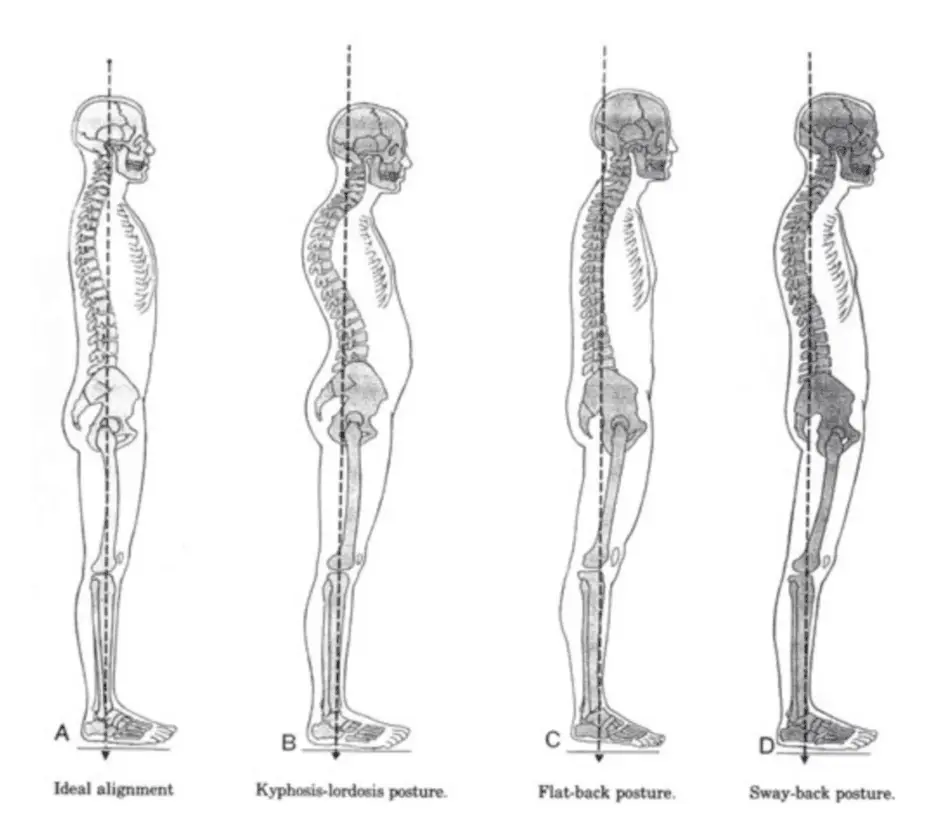It’s important to look at all the facts when considering a new exercise, the good and bad. Here in this article I’ve laid out everything you need to know, including the science and studies to back it up.
Jumping rope is great for your body, in a variety of ways. It burns calories, strengthens your heart, improves posture, builds endurance, relieves stress, increases bone density, and improves coordination, among other benefits.
Don’t just take my word for it, take a look at the science and studies behind each of these claims. It’s pretty amazing what they’ve found.
Also, at the end of this article, I’ve included a couple things you should be aware of, things that could potentially be harmful for your body…
The benefits of jump rope for your body
I’ll start by covering some of the many benefits associated with jumping rope. There are a lot of them! However, like any new exercise, it’s important to consult your doctor before giving it a go.
1. Burns calories
Jumping rope has proven to be one of the most efficient forms of cardio, in terms of calories burned. It’s actually been shown to burn as many calories, if not more, than running.
The following chart shows the exact number of calories burned, per hour, for 20+ different exercises. Pretty interesting!

Over the last 10 years there have been dozens of studies looking into the effectiveness of jumping rope. The overwhelming consensus is that jumping rope is one of the most beneficial and effective forms of cardio, specifically in regards to energy expenditure (i.e. calories burned).
A more recent study, conducted out of India, showed that after only 12 weeks of jumping rope the test group (collegiate males, age 18-25) showed “statistically significant improvement” in their VO2 Max and FMS (Functional Movement Screening).
This is one of numerous studies in this area, all of which come to similar conclusions.
2. Strengthens heart
Another benefit your body gains from jumping rope is a stronger heart. Jumping rope regularly has been shown to improve everything from blood flow and lung capacity, to overall cardiovascular strength.
One of the reasons it’s so effective is because jumping rope, for as little as 2 minutes, increases your heart rate quicker than almost any other form of cardio.
Increasing your heart rate regularly, over time, will strengthen your heart. Believe if or not, your hear is actually a muscle (Cardiac muscle)… jumping rope trains that muscle.
When your heart rate increases, your heart is working harder to pump blood and oxygen into your muscles. Over time, and with consistency, your heart will become significantly more efficient in pumping blood and oxygen to your muscles.
This is probably the best, long-term benefit for you body from jumping rope.
3. Improves posture
Not nearly as well known as the first two, jumping rope can actually do wonders for your posture!
With consistency, jumping rope will actually improve your posture even after you’re done with your jump rope workout. And, there are some pretty attractive side-effects from improved posture, too.
When jumping rope, using proper form, you’re standing erect, your shoulders are back, your torso is centered over your hips, your head is in a neutral position, your entire body is aligned…
One of the biggest benefits from an improved posture is height, or perceived height anyway. Poor posture can actually make you appear to be shorter than you really are, and vice versa, good posture can add as much as 1-3 inches to your height.
See the following diagram… while it’s subtle, when the head, neck and spine are in the ideal alignment you’re able to reach you body’s full “height potential”.

Honestly, even if this was the only thing jumping rope did to your body, sign me up!
4. Builds endurance
Building endurance, or stamina, is another huge benefit jumping rope can do for your body. And, it’s important! Our bodies ability to sustain more energy over longer periods of time has a big impact on the overall quality of our lives.
Playing sports, a simple workout in the gym, going on a hike with friends, even playing with your children… regardless of the activity, endurance plays a huge role in our ability to enjoy ourselves and be successful.
Fortunately, there isn’t too many forms of cardio that are more effective in this arena.
Jumping rope has actually been shown to improve both cardiovascular endurance and muscle endurance. Basically meaning, with consistent training, your body’s heart is able to work longer and more efficiently. And, your muscles, specifically the muscles in your legs (quads, calves, and hamstrings), are able to work longer and more efficiently.
These benefits are huge, especially as you start to get older.
5. Relieves stress
One of my favorite benefits for your body, from jumping rope, is how effective it is at decreasing stress.
Pressure at work, finances, social media and television, everywhere we turn there’s another thing to be stressed out about. And, it’s wreaking havoc on our bodies. Stress, overtime, weakens the immune system, can cause high blood pressure, fatigue, depression, the list goes on…
It honestly seems, nowadays, if you’re not constantly stressed out about something you’re the exception rather than the rule.
I’m here to tell you it doesn’t have to be like that. There are some very real ways of dealing with that stress. Exercise, specifically jumping rope, is a great place to start.
Unlike many exercises, jumping rope is often both an aerobic (60 – 80% of your maximum heart rate) and anaerobic (80 – 90% of maximum heart rate) exercise. This means it taxes the body’s energy stores in a very dynamic way, one that does wonders in relieving stress.
There’s a lot of evidence in suggesting jumping rope decreases stress. And, not just stress either, it’s also shown to increase happiness and self-esteem!
6. Increases bone density
This is probably one that you didn’t think of, but there’s actually some very real benefits to your bones from jumping rope.
When performing any kind of activity or movement where you load weight onto your bones, with some impact, the density of your bones will increase. This definitely isn’t something that happens overnight, but with consistency you can expect your bones to become stronger.
There’s one study I can think of, in particular, where they took 36 collage-age women (20 years old) and had them jump every other day for 6 months. At the end of the study they tested their bone mineral density (BMD) and saw significant improvements across the board.
While unusual, it’s yet another positive thing jumping rope does for your body!
7. Improves coordination
Improving both hand-eye coordination and footwork is also something jumping rope does for your body. And, it seems to improve in a relatively short amount of time.
This is the very reason why you see many boxers jumping rope.
Jumping rope is one of the few forms of cardio that requires you to sync both your arms and your feet. It requires timing, rhythm, and focus. Similar to rubbing your belly and patting your head… it takes some practice.
There was a study, published in the Journal of Sports Science and Medicine, that followed a group of soccer players over 8 weeks. In addition to their regular soccer practice, the players trained with a jump rope. They were later tested to see if the jump had any effect on their motor coordination and balance.
As you can probably imagine, the results suggested jumping rope was an effective method at improving both.
Potential disadvantages of jumping rope
While I’m obviously a huge advocate for picking up a jump rope, I’d be doing you a disservice if I didn’t mention some of the risks or disadvantages of jumping rope.
I can only think of a couple, and they only apply in very specific situations. Nonetheless, they’re worth mentioning.
1. Preexisting injuries
One of the main disadvantages of jumping rope is the potential risk for anyone dealing with an existing injury. Especially injuries pertaining to your joints, such as osteoarthritis.
Contrary to what you might think, jumping rope is actually a low-impact exercise. That said, you can easily make matters worse if you’re recovering from an ankle, knee, or joint injury.
Your best bet, if contemplating whether or not to start jumping rope, is to consult a doctor before risking any further injury or pain.
2. Heart-related problems
Jumping rope, as mentioned previously in this article, can be very taxing on the heart and cardiovascular system. So much so that any current heart-related issues could be exacerbated by jumping rope.
Again, this is a very specific scenario, one that many of your probably aren’t dealing with. However, it’s always best to talk to a doctor if you’re even remotely concerned you have a heart problem.
3. Exercising on your period
While this obviously isn’t something I’ve dealt with personally, I’ve read various articles from women expressing concern over jumping rope on their period. While this evidence is only anecdotal, I thought it was still worth mentioning.
Upon further research, regular aerobic exercise can actually lessen the symptoms caused by a period. That said, it’s suggested that light walking (or other light cardio) is best. And, for those of you who strength-train, it seems low-volume training is ideal.
This is probably more of a “do what feels right for you” recommendation than anything.
Jump rope myth, debunked
One of the most common jump rope myths circulating the internet is how bad jumping rope is for you knees and joints.
That couldn’t be further from the truth.
I can understand why one might think that. Jumping up and down for 15-20 minutes… that can’t be good for your knees, right? The truth is, aside from swimming, jumping rope is one of the most low-impact forms of cardio.
When jumping rope properly, there shouldn’t be any weight loaded onto your knees. In fact, when using good form, all your body-weight is loaded onto the balls of your feet and distributed throughout your calf muscles.
Don’t listen to anyone that says otherwise!
